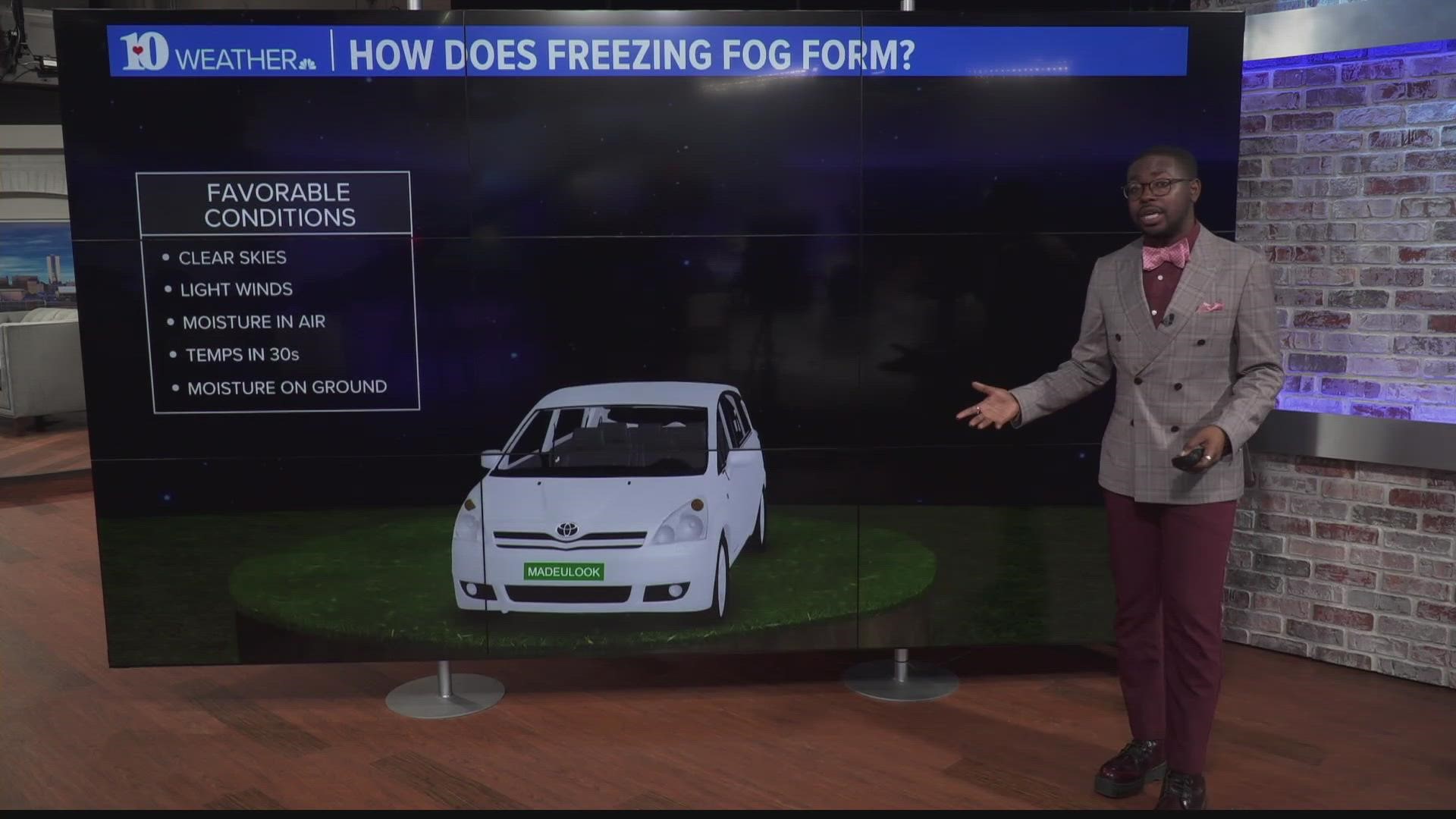KNOXVILLE, Tenn. — While the winter overall has been above average and rainy, there are still some systems that roll through and drop East Tennessee temperatures close to freezing in the 30s.
We may not get snow at these times, but we do get a good amount of frost around the area. Frost is a covering of ice crystals, produced by depositing water vapor onto a surface colder than 32 degrees Fahrenheit.
So here’s how it all works. Similar to fog, your main ingredients are clear skies, light winds, high humidity, moisture on the ground and cold temperatures in the 30s.
Having these clear and calm conditions make the atmosphere more likely to release heat vertically. In the same way that heat rises – and escapes to the atmosphere – cold air sinks closer to the ground. Because of this, the temperature on the literal ground will be a few degrees colder than the air temperature, which we measure up to 6.6 feet off the ground.


From here, the high humidity means that there is a high quantity of water particles in the air. This water vapor could be in sub-freezing temperatures but still wouldn’t freeze.
These are known as “supercooled water droplets”. This is possible because liquids don’t actually freeze on their own, they need a surface to freeze upon. This is why large bodies of water can freeze on the top, but not through the entire body of water.
So these cold water particles approach the ground, which serves as the frozen surface to make ice appear. It usually looks like feathery white ice crystals.
Some of the most common places for frost to occur are on vegetation because water can evaporate directly off of plants. It is also common for frost to appear on any kind of metal, because metals are efficient at emitting radiation, or letting off heat.
Now sometimes, when we get fog during these conditions, we can see freezing fog. Fog is essentially a thick blanket of water vapor in the air. During cold, calm nights, some of that fog can freeze! It’s the same exact concept. And since fog hangs in the air, it can freeze on any exposed surface.
That includes stairs and walkways, tree branches, vehicles, and roads – which can be especially dangerous because black ice can develop. Planes combat frost with the deicing materials they spray on the planes before takeoff.
Freezing fog shouldn’t be confused with ice fog, even though it is a common association. Ice fog is when literal ice crystals are suspended in the air while freezing fog is when water particles freeze upon impact with something else.

